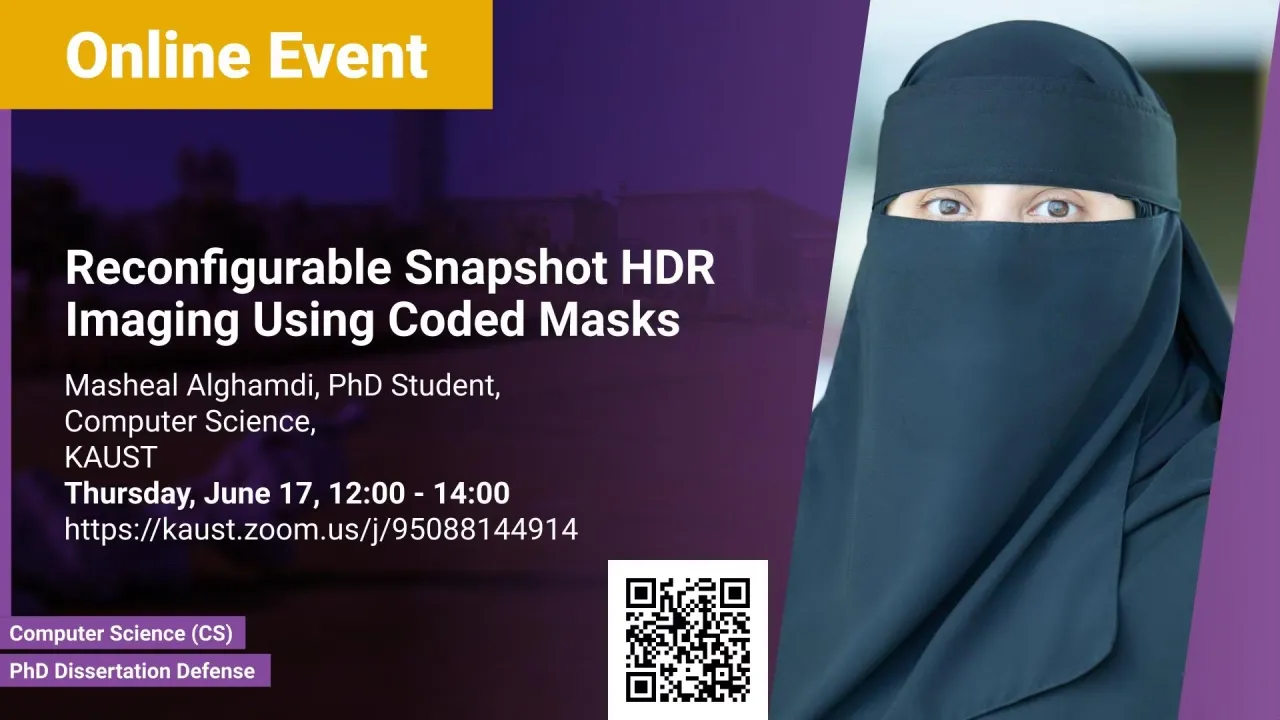
Reconfigurable Snapshot HDR Imaging Using Coded Masks
KAUST
High Dynamic Range (HDR) image acquisition from a single image capture, also known as snapshot HDR imaging, is challenging because the bit depths of camera sensors are far from sufficient to cover the full dynamic range of the scene. Existing HDR techniques focus either on algorithmic reconstruction or hardware modification to extend the dynamic range. In this thesis, we propose a joint design for snapshot HDR imaging by devising a spatially varying modulation mask in the hardware combined with a deep learning algorithm to reconstruct the HDR image. In this approach, we achieve a reconfigurable HDR camera design that does not require custom sensors, and instead can be reconfigured between HDR and conventional mode with very simple calibration steps. We demonstrate that the proposed hardware-software solution offers a flexible, yet robust, way to modulate per-pixel exposures, and the network requires little knowledge of the hardware to faithfully reconstruct the HDR image. Comparative analysis demonstrated that our method outperforms the state-of-the-art in terms of visual perception quality.
Overview
Abstract
High Dynamic Range (HDR) image acquisition from a single image capture, also known as snapshot HDR imaging, is challenging because the bit depths of camera sensors are far from sufficient to cover the full dynamic range of the scene. Existing HDR techniques focus either on algorithmic reconstruction or hardware modification to extend the dynamic range. In this thesis, we propose a joint design for snapshot HDR imaging by devising a spatially varying modulation mask in the hardware combined with a deep learning algorithm to reconstruct the HDR image.
In this approach, we achieve a reconfigurable HDR camera design that does not require custom sensors, and instead can be reconfigured between HDR and conventional mode with very simple calibration steps. We demonstrate that the proposed hardware-software solution offers a flexible, yet robust, way to modulate per-pixel exposures, and the network requires little knowledge of the hardware to faithfully reconstruct the HDR image. Comparative analysis demonstrated that our method outperforms the state-of-the-art in terms of visual perception quality.
We leverage transfer learning to overcome the lack of sufficiently large HDR datasets available. We show how transferring from a different large scale task (image classification on ImageNet) leads to considerable improvements in HDR reconstruction.
Brief Biography
Masheal Alghamdi received her Bachelor of Science in Computer Science from King Abdulaziz University. She later obtained her MSc degree in computer science, focusing on Artificial intelligence for image classification and recognition from King Abdullah University of Science and Technology (KAUST) in 2014. Currently, she is pursuing her Ph.D. degree focusing on computational imaging, particularly in deep learning for snapshot high dynamic range imaging. She is a researcher working for King Abdul-Aziz
City for Science and Technology since 2009.